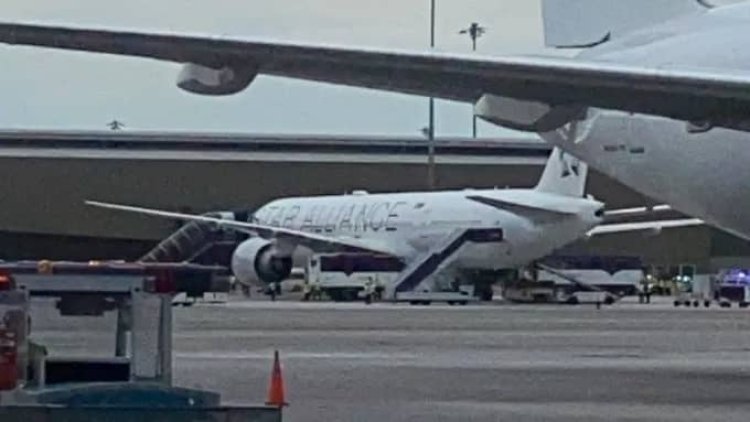Severe turbulence strikes a Singapore Airlines flight, resulting in one death
On a journey from London to Singapore, a Singapore Airlines aircraft experienced significant turbulence, which resulted in one person's death, the carrier reported on Tuesday.

On the Singapore Airlines Facebook page, there was a post stating that the Boeing 777-300ER airliner had gone to Bangkok. The airline said that several individuals had been hurt, although it did not say how many.
211 passengers and 18 crew members were listed as being on board. On Tuesday around 3:45 p.m. local time (4:45 a.m. ET), the aircraft touched down in Bangkok.
The corporation stated in its statement, "We are sending a team to Bangkok to provide any additional assistance needed, and we are working with the local authorities in Thailand to provide the necessary medical assistance."
The airline also offered its condolences to the impacted parties and stated, "Our priority is to provide all possible assistance to all passengers and crew on board the aircraft."
When an aircraft passes between colliding air masses traveling at drastically different speeds, turbulence results. Passengers may feel pressure from their seatbelts in mild to moderate turbulence, and loose objects may fly around the cabin.
However, under extreme circumstances, turbulence can fling occupants around the cabin, leading to serious injuries and occasionally fatalities.
A former White House official died in March 2023 as a result of severe turbulence aboard a private plane, only days after seven other people were taken to hospitals following severe turbulence on a separate commercial trip.
Thirty-six individuals were rushed to emergency rooms after a Hawaiian Airlines flight from Arizona to Honolulu in December 2022 suffered 36 injuries, including strong turbulence that buffeted the aircraft in July 2023, injuring seven people.
According to a September 2022 study, clear-air turbulence is expected to grow globally by 2050–2080, with the strongest type of turbulence experiencing the greatest increase along the busiest flight routes.

 Boakyewaa Lawrencia
Boakyewaa Lawrencia 

































